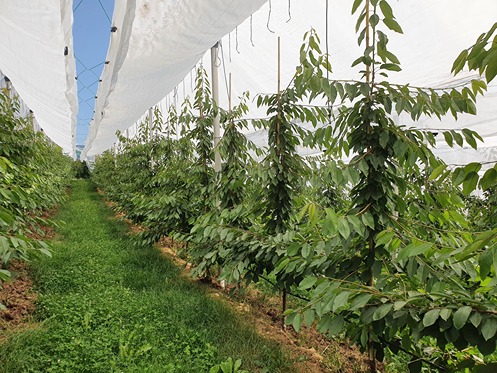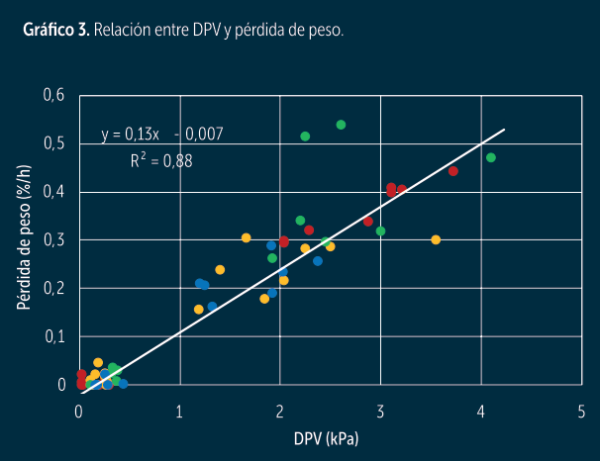Claire Scofield has received a postgraduate scholarship from the NZ Fruitgrowers' Charitable Trust 2024. Her research investigates the effects of environmental conditions under rain covers on calcium uptake in cherries. Her goal is to deepen the understanding of xylem dynamics and the impact of rain covers on these processes, exploring mitigation strategies through vegetation management, nutrient application, or plant growth regulators. Funded by Hort Innovation and supervised by the University of Tasmania, with half of the field research conducted in Central Otago and supported by Plant & Food Research, this study benefits Australian and New Zealand growers facing similar fruit quality issues.
How well are calcium dynamics understood in stone fruits compared to apples?
The calcium dynamics are much better understood in apples than in cherries, mainly due to the significant impact that calcium deficiency can have on apples, particularly through disorders like bitter pit, which heavily affects pack-out rates. In cherries, the role of calcium is less clear. While calcium is thought to contribute to fruit firmness and post-harvest quality, many other factors also play important roles. Research on cherries is limited, as there are no direct consequences of low calcium levels other than potential quality issues. A key difference between apples and cherries is the duration of xylem functionality, which is 30-40 days in cherries compared to 60-80 days in apples, making timing even more critical in cherries. While calcium is a central element of my project, there is room to explore other factors as the research evolves.

What key findings can you already share about cultural practices?
The first year was mainly spent experimenting with methods, but one of the most interesting discoveries was related to the increased movement of calcium into fruits by removing new vegetative growth. By removing all actively growing shoots for a season, we recorded an average increase of about 30% in calcium levels in the fruit. While this increase is significant, the treatment was quite extreme and is not something we would recommend growers implement. However, this year we are exploring a much milder approach, introducing very early summer pruning (before 40 days after full bloom (DAFB)) to see if it produces a similar effect – something growers could realistically adopt. It’s a starting point to better understand the timing and identify the critical moments to ensure uptake.
Are more growers adopting rain covers and protected cropping?
Yes and no. Most growers agree that rain covers can make the difference between harvesting a crop or losing it during a season of heavy rainfall. However, the cost of installing these covers, especially over large blocks, can be prohibitive. The adoption of rain covers in New Zealand and Tasmania appears to be at a similar level. In Tasmania, growers tend to deploy rain covers during flowering to support better fruit set. Thanks to warmer temperatures and drier conditions after rain, bees are still able to pollinate.

How have you split your research across both sides of the Tasman?
I’ve been fortunate that growers in both New Zealand and Australia have been very open and willing to engage. In Australia, I collaborated with a grower to conduct field trials, and they have been very supportive, even with some of the unconventional practices we introduced in their orchards. In Central Otago, I have a few growers who are always happy to chat, share ideas, and offer feedback, which has been invaluable. With support from both sides of the Tasman, I believe there’s a shared understanding that this type of research will benefit growers facing the challenges of environmental changes and how to adapt. I was also fortunate to attend and present at the Australian National Cherry Industry Conference, where some New Zealand growers were also present.
Read the full article: Horticulture New Zealand
Images: SL Fruit Service
Cherry Times - All Rights Reserved












